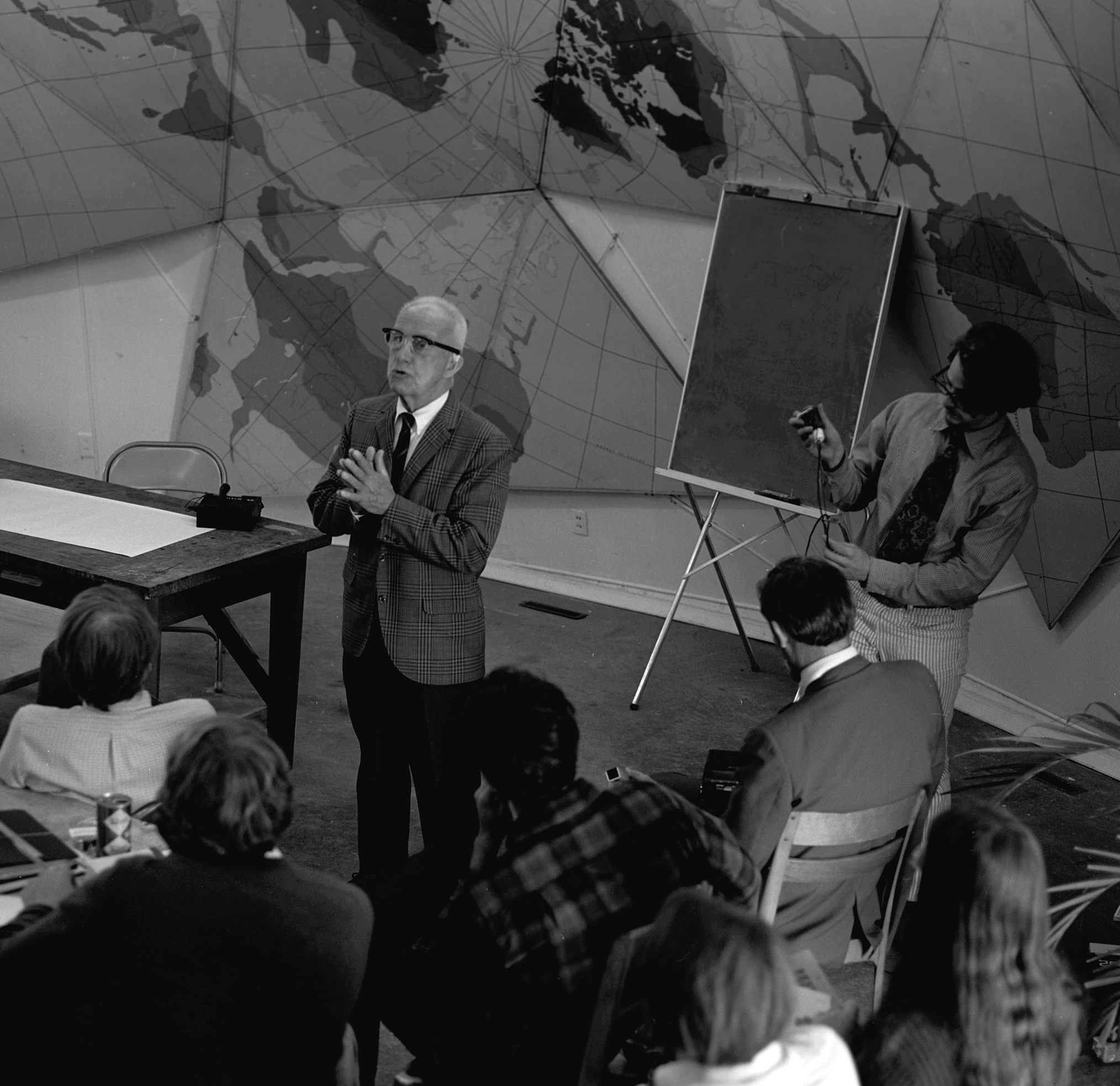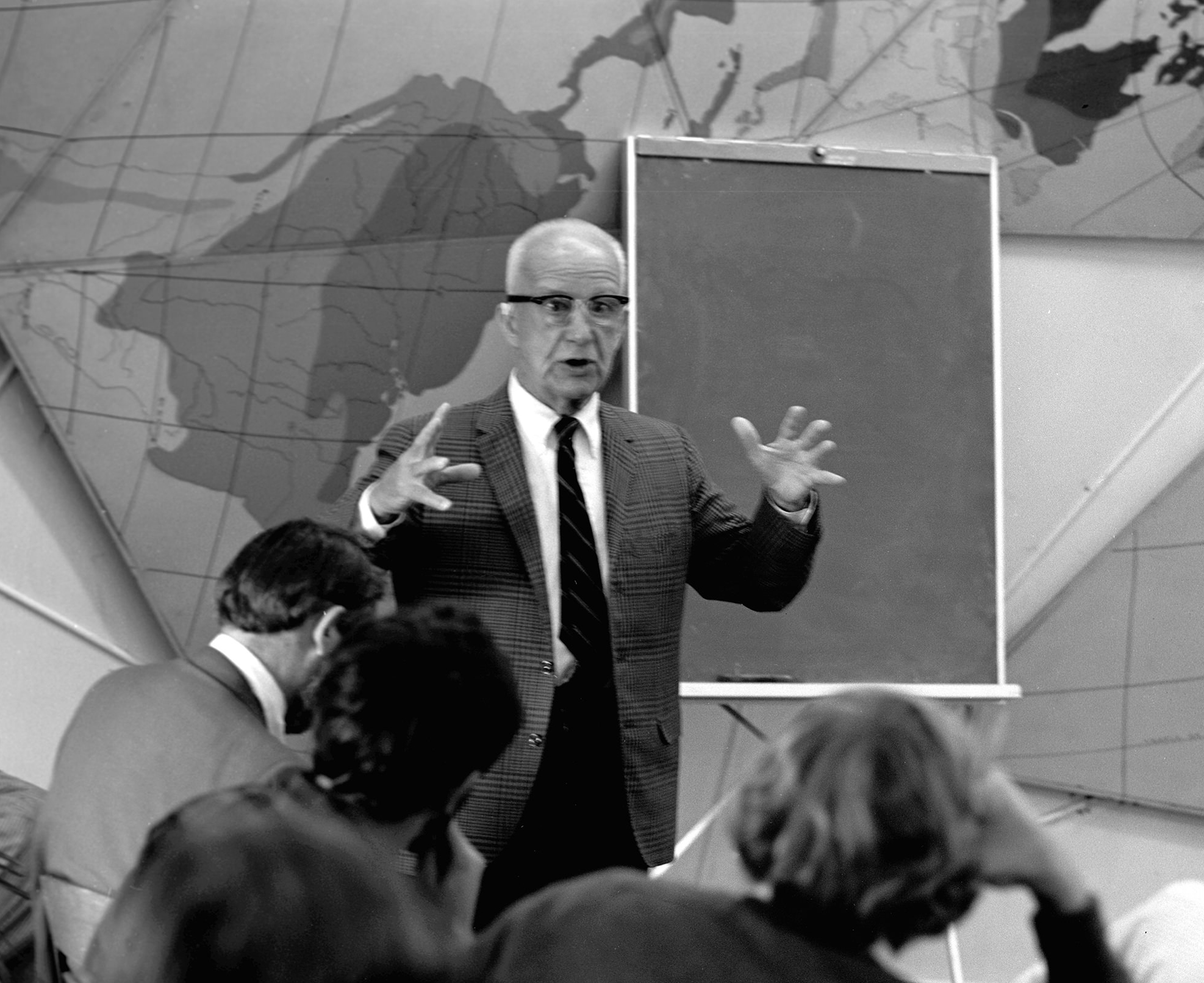R Buckminster Fuller
/https://siu.edu/search-results.php
Last Updated: Oct 27, 2025, 03:40 PM

Global Fusion 2025 | OCT 16–19, 2025 | Carbondale, IL
BUCKMINSTER FULLER: A VISIONARY OF DESIGN AND SUSTAINABILITY
R. Buckminster Fuller
Richard Buckminster Fuller, or “Bucky,” was a visionary designer, architect, inventor and writer whose contributions included such visionary inventions as the geodesic dome , the dymaxion car and the dymaxion map that formed the basis for Bucky’s “great logistics game” and “world peace game.” Nicknamed the “World Game”, it is still played today. Buckminster Fuller spent his life creating tools he intended us to use in solving the great problems of the world.

Teaching and Influence at Southern Illinois University Carbondale
Fuller joined the Southern Illinois University Carbondale (SIUC) design department in 1956, serving as a professor until 1971. While here, Fuller lived in a geodesic dome he constructed near the SIUC campus. The Fuller Dome Home Preservation Project will be running tours of the Bucky Dome Home during our Global Fusion 2025 conference.
Fuller’s time at SIU was one of the most productive periods of his career, as he continued refining his theories on synergetics, an interdisciplinary study of systems in nature and design. At SIU, Fuller became an influential mentor to students, encouraging them to think holistically about design, sustainability, and resource management. He also continued to advocate for “Spaceship Earth,” his concept that humans must learn to manage the planet’s finite resources wisely, much like astronauts do with a spacecraft. His lectures often captivated audiences, blending engineering, philosophy, and visionary thinking.
The Geodesic Dome and Architectural Impact
The Geodesic Dome is Fuller’s most famous invention, and the dome that Fuller himself lived in here in Carbondale is located within walking distance from Southern Illinois University Carbondale campus. The geodesic dome is a lightweight and exceptionally strong structure, designed to cover vast areas without internal supports. This breakthrough design was widely adopted for military, industrial, and ecological uses due to its strength, cost-effectiveness, and sustainability. Thousands of geodesic domes have been built around the world, including at places like Epcot’s Spaceship Earth and military radar stations.
Early Life and Education
Richard Buckminster Fuller was born on July 12, 1895, in Milton, Massachusetts. From a young age, he demonstrated an inventive spirit, often building his own tools and mechanical devices. He attended Harvard University but was expelled twice – first for excessive socializing and later for irresponsibility. Despite this setback, Fuller continued his self-directed education, gaining practical experience in the U.S. Navy during WWI, where he worked with new materials and construction techniques.
The Turning Point: 1927 and the Dymaxion Concept
1927 was a year of both personal and professional crisis for Fuller, following the death of his young daughter and a series of business failures. He embarked on a lifelong mission dedicated to improving human living conditions by exploring how technology and design can maximize efficiency and sustainability. This led to his “Dymaxion” concept – a fusion of “dynamic,” “maximum,” and “tension” – which sought to create more livable, efficient spaces and vehicles.
His Dymaxion House, an innovative, lightweight, and prefabricated dwelling, was designed to be mass-produced and energy efficient. He also experimented with the Dymaxion Car, a three-wheeled vehicle that improved aerodynamic efficiency, though it never entered mass production.

Later Years and Legacy
After leaving SIU, Fuller continued his prolific career, publishing works such as Operating Manual for Spaceship Earth and Critical Path. He received numerous awards, including the Presidential Medal of Freedom in 1983. His ideas on sustainability, resource efficiency, and innovative design continue to inspire architects, environmentalists, and futurists.
Buckminster Fuller passed away on July 1, 1983, leaving behind a legacy that challenged humanity to think beyond conventional constraints and embrace a more sustainable future. His time in Carbondale remains a crucial chapter in his story, reflecting his commitment to education and innovation.
Sources
https://www.bfi.org/about-fuller/biography/
https://siudesign.org/fuller.htm
https://fullerdomehome.com/
https://collections.carli.illinois.edu/digital/collection/sic_photos/id/872/
https://en.wikipedia.org/wiki/Buckminster_Fuller
If you have any questions, email us at: global.fusion.2025@siu.edu